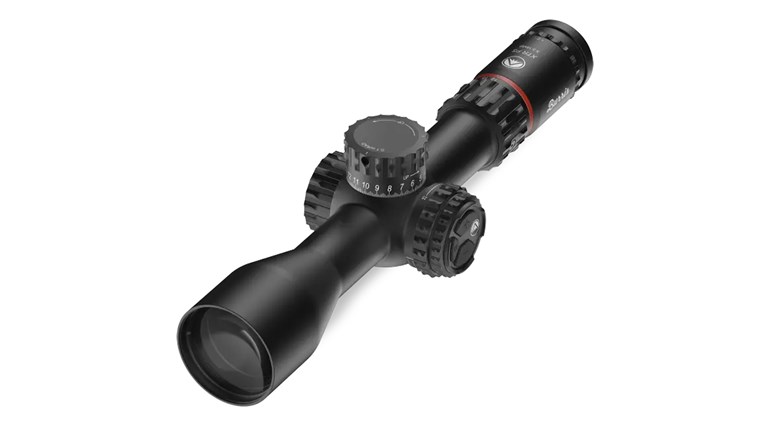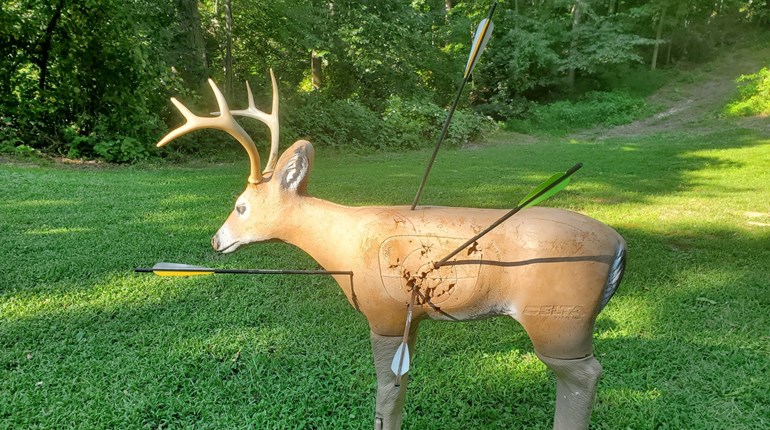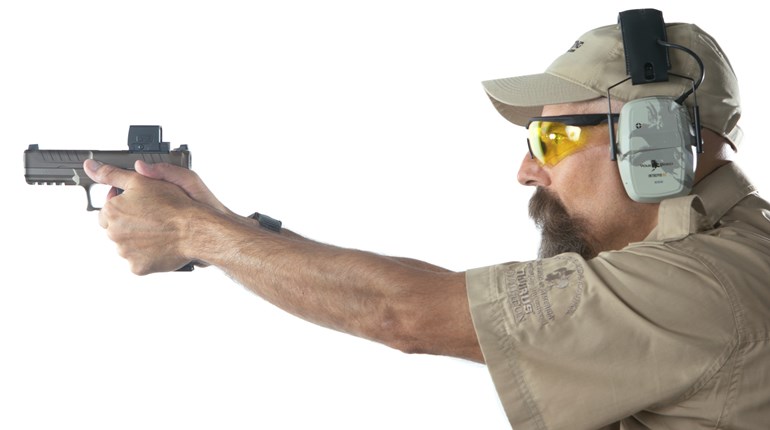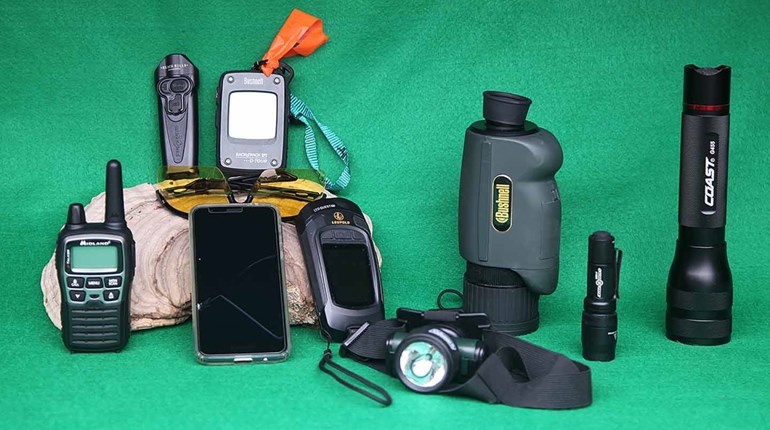We’d pushed the horses hard since 4 a.m. and their chests were heaving as we dismounted and prepared our gear for the steep climb. Sunlight would be breaking over the mountain peaks any minute and we had a thousand vertical feet to climb before we’d be in position. Having made the trek up and down this ridgeline multiple times this week, I knew that the next few minutes were not going to be fun, but the promise of a shot at the bull they’d named “Romeo” was all the motivation I needed to go. We heard the first bugle when we were halfway up the rockslide and the sound urged me forward despite my body’s protests. My legs burned, my lungs panicked in the altitude and my feet ached in my overpriced European mountain boots. One step at a time, one more ascent.
Non-Typical Outfitters’ 26 year-old mountain goat/guide Jeff Walter bird-dogged forward with a noticeable sense of urgency as we hit the first false peak. With the wind dead wrong, we side-hilled around the backside of the ridge to close the distance on the herd without getting busted. Dawn had broken and we popped over the ridge every 100 or so yards, trying to spot the elk feeding before they retreated into the timber. The herd’s position was betrayed by the knock of an antler against an aspen, and we knew we had them. We slid down the incline just as we spotted the first cow.
“Shoot that bull,” was all that Jeff had to say. A week of little sleep, lots of riding, hiking, sweating and shivering all culminated into this moment. The wind was bad and the cows were close. We were seconds away from watching this herd scramble out of sight and out of range. The shot wasn’t far, less than 100 yards, but it was tricky—the bull was moving and I could only see blonde slices of elk through the timber. Additionally, the slope of the ridge concealed all but the massive torsos of the feeding animals, making it easy to shoot too high. I picked a lane, waited for a lung to appear, and sent a 180 grain Accubond into the 6x6. The world slowed down as I cycled the bolt and put two more muffled shots into what the bull showed me, first his neck, then a quartering-away lung shot as the herd ran off and he walked slowly. The first and last shots felt solid; this bull was dead.
When our initial search didn’t turn up the elk, we backtracked looking for blood. I found the first tiny droplet and Jeff picked up the trail, if you can call ten or so drops over 150 yards a trail. My enthusiasm faded to pessimism as I reviewed the mental image of the shots for the first of a thousand times. Despite spending the remaining two days of the hunt scouring the mountainside from the high side of the timber to the creek bottom 1,200 feet below, we found no further sign of the great bull. My best estimate is that he was hit high in the lungs and was able to put a great deal of distance between us before he gave up to his wounds. Whether he’s alive and well, painfully wounded or dead in the timber somewhere—I’ll never know and I’ll never forget about it. I can’t get those moments back but I can learn from them, and so can you.
We don’t like to talk about our misses, or worse, our bad hits—but they happen. If it hasn’t happened to you, you probably haven’t hunted much. I’m a pretty good rifle shot and I practice far more often than most hunters, keep my equipment in order, take bullet and cartridge selection seriously and don’t fall apart at the sight of a trophy animal. That being said, I have lost a few animals and I’ll unfortunately lose a few more unless I give up this way of life. It’s happened twice in Africa: on my first safari on a Gemsbok bull and on a warthog in Zimbabwe on my last trip. It’s happened once on a whitetail doe that I shot on a rainy day with a handgun and on a nice Florida buck that I shot with a bow just last season. In my honest analysis of the events, I believe that nearly all of these animals were mortally wounded, but the shot placement was not there to ensure a recovery. It would be easy to blame unseen branches, bullet performance or animal movement for any of these bad hits, but all that matters is that I pulled the trigger or released the arrow and the animal’s life was wasted. As a hunter, it’s up to me to decide whether the bullet is up to the task or the shot is one that I can make—no excuses.
Most hunters worry about long shots and they probably should. Interestingly though, every time that I’ve lost an animal the shot presented was at relatively close range where speed was more of a factor than raw marksmanship. There’s a saying in IPSC shooting that states: “you can’t miss fast enough to win,” and it applies equally to hunting. Sometimes fast shots are a necessary evil and hesitation can blow an opportunity, but taking that extra split-second to make the shot count is a must. I didn’t have much time to spare when it came to shooting that elk this year, but if I had it to do over again I’d take an extra moment to be sure of my shot placement.
We must always remember that part of hunting involves taking a life. If done cleanly and ethically, I have no problem with that but we should never be cavalier about making sure that it’s done as quickly and painlessly as possible.





































